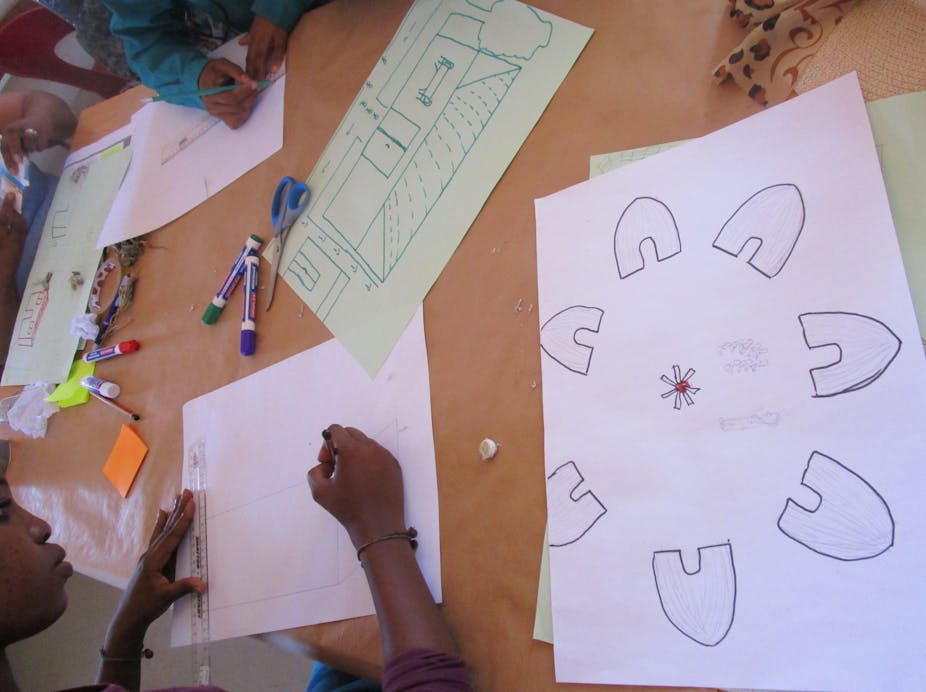What happens when local communities are actively involved in plotting their own solutions to the everyday problems that plague them? These challenges could be social, economic, environmental or civic in nature. This question lies at the heart of several inclusive innovation processes that are being used around the world. Inclusive innovation aims to explore, research, propose and implement solutions to the challenges experienced by low-income and disadvantaged communities.
Such processes make sense. Communities know their own needs best. They also understand how the services they require – healthcare, policing, education – should be provided. But while policymakers, officials and researchers are showing a growing interest in this inclusive approach globally, implementation is not yet particularly common.
Inclusive innovation processes could be extremely valuable in South Africa. In recent years the country has experienced violence and increased tension between the organisations that provide services, like government departments, and communities. This is because of a lack of accessible basic services such as education and access to medical care. It’s become critical to get all the stakeholders involved when developing new service strategies and designing interventions.
We wanted to know what this would look like in practice. So we embarked on a pilot project with 16 San youth from Platfontein, just outside Kimberley in South Africa’s Northern Cape province. The San
Read more: Excavating meaning from the complex myths of southern Africa's San people
is Southern Africa’s oldest indigenous community. Our aim was to explore the potential of digital storytelling as a method to engage community members in the process of identifying service needs and their service delivery context.
The project drew inspiration from the San’s own heritage and long tradition of storytelling – with a modern twist. We used digital storytelling methods like short narrated video clips, drawings and images to create a space in which the participants could – in their own words, in their language of choice – conceptualise possible solutions to their community’s challenges. We also asked them to visualise what they wanted their communities to look like in the future.
This allows for real open innovation, from within a community, to realise and conceptualise people’s service needs and the delivery mechanisms that would work best for them. Our findings add to a global body of work that suggests designers of both products and services, as well as researchers and policy makers must actively explore methods that allow communities to be part of developing the brighter future they imagine.
Bringing people’s stories to life
Digital storytelling has several applications. It can be used to capture experiences and individual reflections. It’s also a good method for capturing and preserving culture, tradition and identity for future generations.
We built on this foundation and developed a method that participants could use to express themselves on the issue of service delivery and community needs. Language, cultural practices and lived experiences can all affect how community members and researchers engage with each other.
Adopting digital storytelling approaches for this project meant the traditional power dynamics were no longer present. The participants were able to take ownership of the process and outcome.
First, we asked the participants to physically map their “future community”. The goal was to produce a visual representation of their community, which included the everyday services they require. The maps were constructed on large pieces of paper and included drawings and natural materials from the environment, like sand and seedpods.
The process of creating and visualising a future community gave participants the opportunity to discuss their views with each other. Through this discussion they decided upon a hierarchy of service needs, which allowed insights into the most pressing needs of the community. Medical and social services were noted among the most needed.
As the group began to record their stories and add narrative, they shared a newly negotiated future vision for their community. This aspect of the process meant that the team could capture their community’s collective views and needs in a manner that supported an authentic means of self-expression.
The narration of the video captured the voices, needs, hopes and dreams of real community members.
Real service solutions
Several patterns and themes emerged from the participants’ stories, as well as materials from the workshop.
People identified a number of service needs, such as localised medical care and social workers. There was also a call for services that promote cultural preservation and the sharing of indigenous knowledge from one generation to the next. Participants said that educational support was needed along with sport facilities and organisations, as well as services to help tackle alcoholism and substance abuse.
The next step would be to see these needs converted into real service solutions. And this is where innovation thrives. For example, Singapore’s government collaborated with design group IDEO to work on their services in several government ministries to dramatically improve services for the public.
Many of the service needs and community challenges highlighted by the San participants could be supported or resolved through technology. Mobile-based information services, or diagnostics using a mobile phone camera may support a medical decision as to whether an individual needs to travel to a local hospital.
New service strategies could support educational needs. This could take the form of mentoring local community members to support families with early childhood development. All of this means that concepts for technological innovations, or local service offerings, are no longer being “pushed” onto communities. Instead, they are evolving from community-identified needs.
Our findings informed the development of similar workshops elsewhere in South Africa and in Namibia for the European Union-funded Participatory Development with the Youth project.

